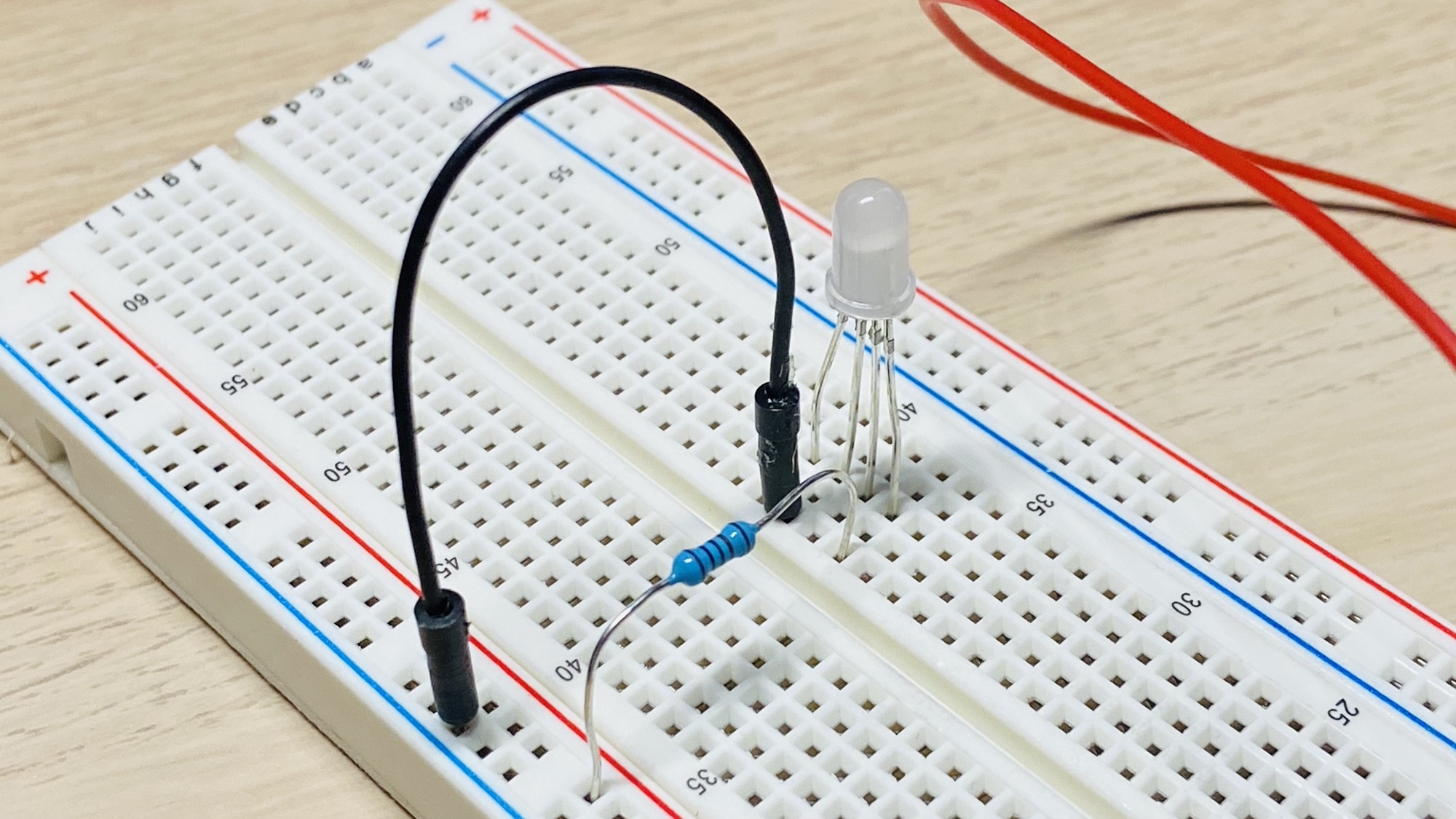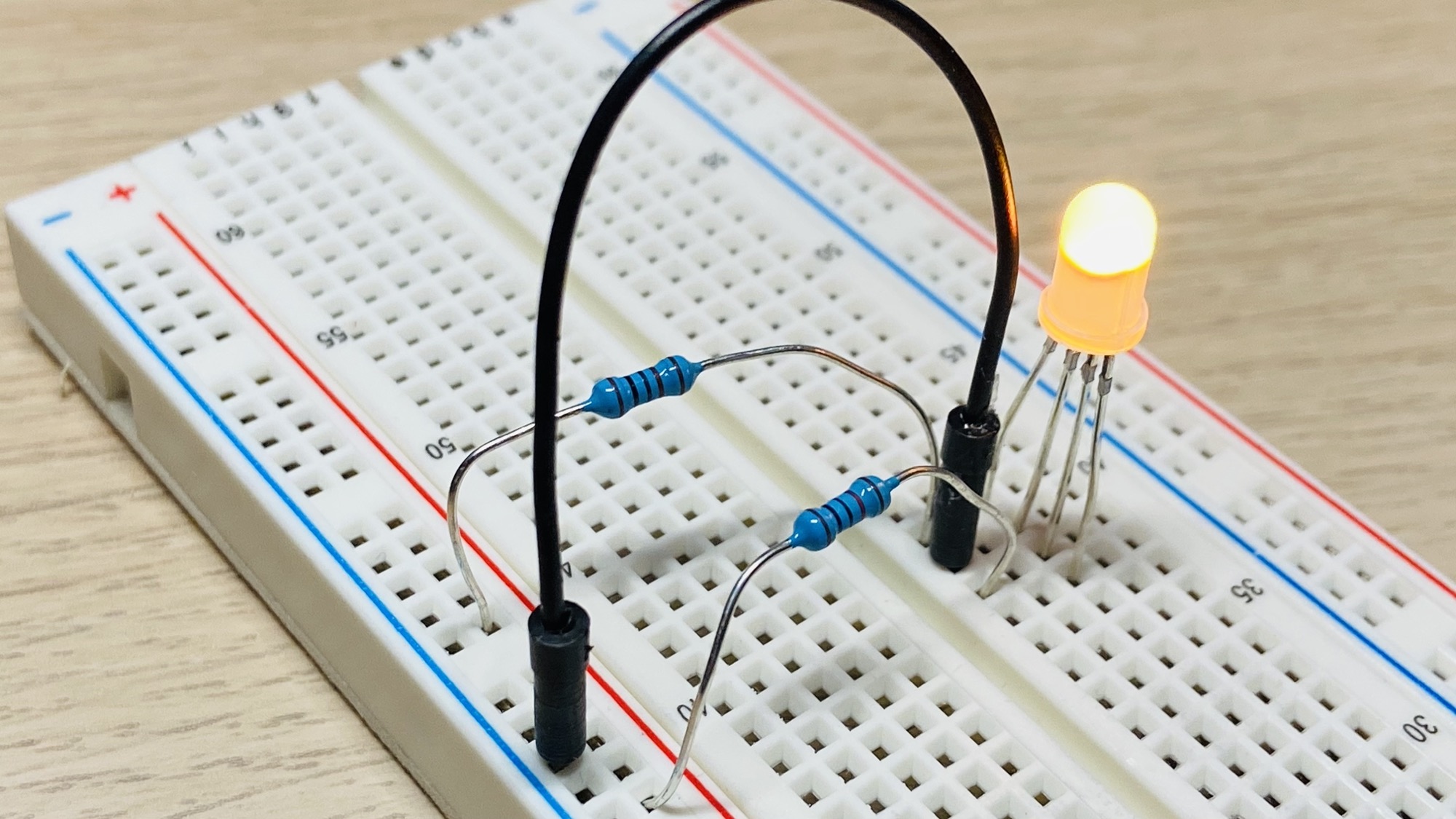Electronic components: RGB LEDs
An RGB LED is a special kind of LED that looks like a regular LED, but it has 4 leads and it can display a different color based on the configuration.

We talked about LEDs previously. Normal LEDs typically have one color, which can usually be red, blue, green, yellow, white, and it has 2 leads:

An RGB LED is like 3 LEDs into one, but it’s even more, because it can create any color from those 3 primary colors, by providing different amounts of current to each lead. Just search “mixing primary colors” on Google for more information on this.
The 4 leads are one for each primary color, red, blue, green, and then one common pin.
There are 2 kinds of RGB LEDs: common anode and common cathode.
Remember, LEDs are diodes, so the direction of the current is important
In a common cathode configuration, the common pin is the ground.
In a common anode configuration, the common pin is Vcc, the positive voltage.
This is very important for how we build our circuits. Remember that LEDs need to be connected to a resistor to limit the current.
How do you find out, if you don’t now which type of RGB LED do you have? The easiest way is to test it.
Connect the RGB LED to a breadboard:


Now connect the longest pin to ground and a pin to + through a resistor. I used a 1kΩ resistor in this example:

Now connect a battery, a 9V battery for example, and see if it lights up:

Great! Now you can change the color of the LED by connecting the other 3 pins with resistors of different resistance values:



download all my books for free
- javascript handbook
- typescript handbook
- css handbook
- node.js handbook
- astro handbook
- html handbook
- next.js pages router handbook
- alpine.js handbook
- htmx handbook
- react handbook
- sql handbook
- git cheat sheet
- laravel handbook
- express handbook
- swift handbook
- go handbook
- php handbook
- python handbook
- cli handbook
- c handbook
subscribe to my newsletter to get them
Terms: by subscribing to the newsletter you agree the following terms and conditions and privacy policy. The aim of the newsletter is to keep you up to date about new tutorials, new book releases or courses organized by Flavio. If you wish to unsubscribe from the newsletter, you can click the unsubscribe link that's present at the bottom of each email, anytime. I will not communicate/spread/publish or otherwise give away your address. Your email address is the only personal information collected, and it's only collected for the primary purpose of keeping you informed through the newsletter. It's stored in a secure server based in the EU. You can contact Flavio by emailing flavio@flaviocopes.com. These terms and conditions are governed by the laws in force in Italy and you unconditionally submit to the jurisdiction of the courts of Italy.